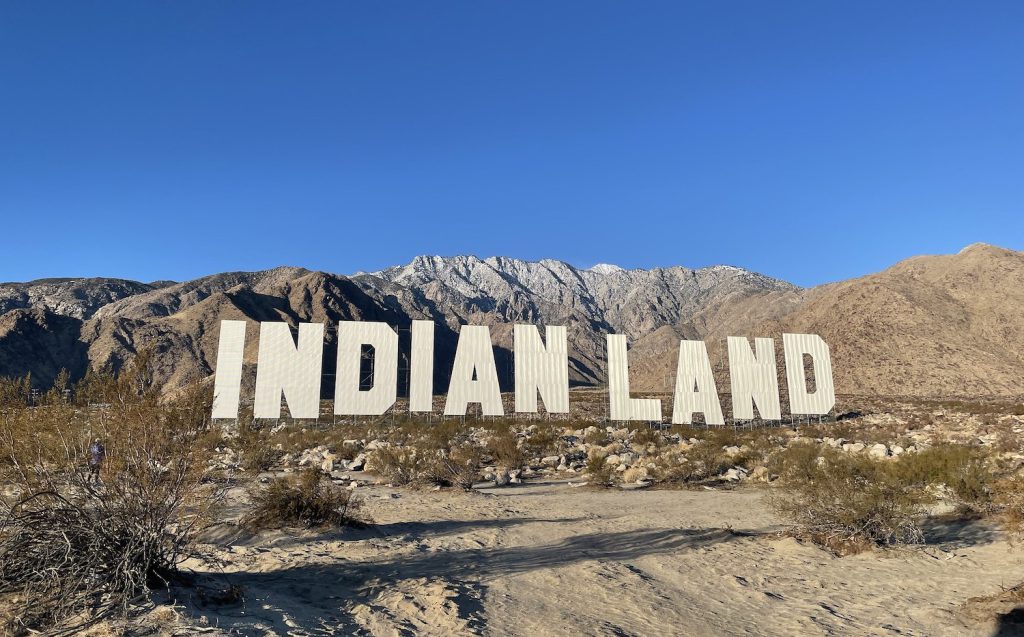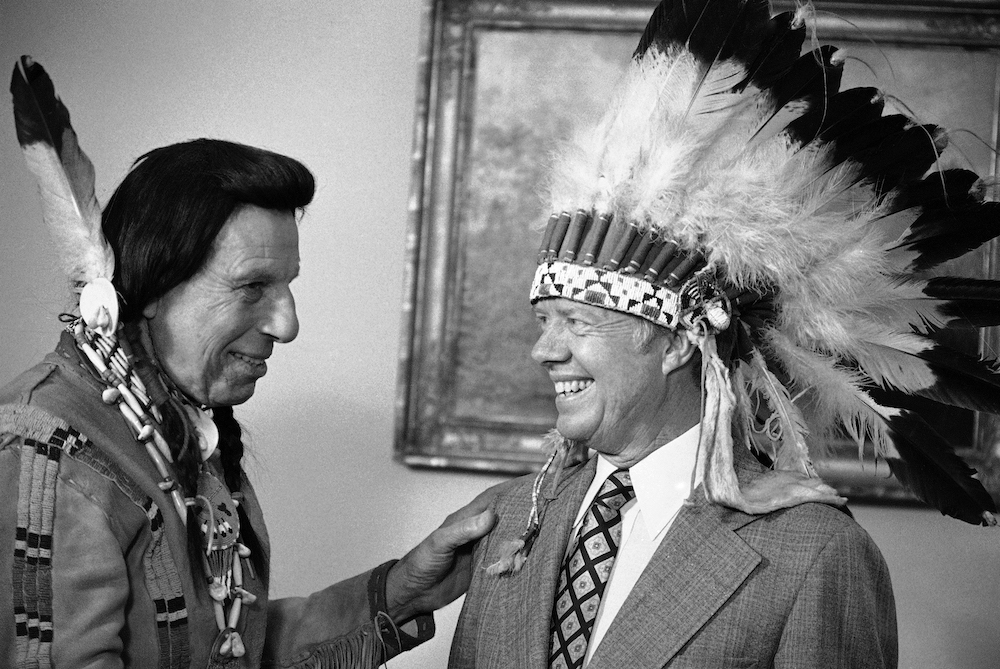Land Acknowledgments Are Not Enough

This article was originally published at The Conversation and has been republished under Creative Commons.
Many events these days begin with land acknowledgments: earnest statements acknowledging that activities are taking place—or institutions, businesses, and even homes are built—on land previously owned by Indigenous peoples.
And many organizations now call on employees to incorporate such statements not only at events but in email signatures, videos, syllabuses, and so on. Organizations provide resources to facilitate these efforts, including pronunciation guides and video examples.
Some land acknowledgments are carefully constructed in partnership with the dispossessed. The Burke Museum at the University of Washington in Seattle describes this process:
“Tribal elders and leaders are the experts and knowledge-bearers who generously shared their perspectives and guidance with the Burke. Through this consultation, we co-created the Burke’s land acknowledgment.”
That acknowledgment reads:
“We stand on the lands of the Coast Salish peoples, whose ancestors have resided here since Time Immemorial. Many Indigenous peoples thrive in this place—alive and strong.”
Land acknowledgments have been used to start conversations regarding how non-Indigenous people can support Indigenous sovereignty and advocate for land repatriation.
Yet the historical and anthropological facts demonstrate that many contemporary land acknowledgments unintentionally communicate false ideas about the history of dispossession and the current realities of American Indians and Alaska Natives. And those ideas can have detrimental consequences for Indigenous peoples and nations.
In addition to recognition within our physical and digital spaces, we intend to open home games, events and other gatherings by acknowledging the traditional Native American inhabitants of the land moving forward.
Learn more about Land Acknowledgements: https://t.co/WAZJMAJJ7G pic.twitter.com/cTfQkNNz46
— Chicago Blackhawks (@NHLBlackhawks) November 1, 2020
This is why, in a move that surprised many non-Indigenous anthropologists to whom land acknowledgments seemed a public good, the Association of Indigenous Anthropologists requested that the American Anthropological Association officially pause land acknowledgments and the related practice of the welcoming ritual, in which Indigenous people open conferences with prayers or blessings. The pause will enable a task force to recommend improvements after examining these practices and the history of the field’s relationship with American Indians and Alaska Natives more broadly.
We are three anthropologists directly involved in the request—Valerie Lambert, of the Choctaw Nation and the president of the Association of Indigenous Anthropologists; Michael Lambert, of the Eastern Band of Cherokee Indians and a member of the Association of Indigenous Anthropologists; and Elisa (E.J.) Sobo, an American Anthropological Association board member charged with representing interests such as those of the Association of Indigenous Anthropologists. We’d like to further illuminate this Indigenous position, not from the association’s perspective but from our perspective as scholars.
“WHAT WAS ONCE YOURS IS NOW OURS”
No data exists to demonstrate that land acknowledgments lead to measurable, concrete change. Instead, they often serve as little more than feel-good public gestures signaling ideological conformity to what historians Amna Khalid and Jeffrey Aaron Snyder have called—in the context of higher education’s diversity, equity, and inclusion efforts—“a naïve, left-wing, paint-by-numbers approach” to social justice.
Take, for instance, the evocation in many acknowledgments of a time when Indigenous peoples acted as “stewards” or “custodians” of the land now occupied. This and related references—for example, to “ancestral homelands”—relegate Indigenous peoples to a mythic past and fail to acknowledge that they owned the land. Even if unintentionally, such assertions tacitly affirm the putative right of non-Indigenous people to now claim title.
This is also implied in what goes unsaid: After acknowledging that an institution sits on another’s land, there is no follow-up. Plans are almost never articulated to give the land back. The implication is: “What was once yours is now ours.”
There is a tendency to cast Indigenous peoples as part of “prehistory.”
Additionally, in most cases, these statements fail to acknowledge the violent trauma of land being stolen from Indigenous people—the death, dispossession, and displacement of countless individuals and much collective suffering. The afterlives of these traumas are deeply felt and experienced in Indigenous communities.
But because non-Indigenous people are generally unaware of this trauma, land acknowledgments are often heard by Indigenous peoples as the denial of that trauma. This perspective is reinforced by a tendency to cast Indigenous peoples as part of “prehistory,” suggesting that the trauma of dispossession, if it happened at all, did not happen to real or wholly human people.
Further, land acknowledgments can undermine Indigenous sovereignty in ways that are both insidious and often incomprehensible to non-Indigenous people.
For example, non-Indigenous people tend to seek local “Indigenous” affirmation of their acknowledgment performance, such as by arranging for a conference blessing or Welcome to Country ritual. Such rites often feature the voices of people who, in Indigenous studies scholar Kim TallBear’s words, play at being Indian—that is, those who have no legitimate claim to an Indigenous identity or sovereign nation status but represent themselves as such.
SOVEREIGNTY AND ALIENATION
Appropriation of American Indian and Alaska Native identity by individuals who are not members of sovereign tribes, referred to as “pretendians” by actual American Indians and Alaska Natives, is endemic. Actor Iron Eyes Cody, for instance, built a decadeslong career on it despite his Italian heritage.
Demographic data suggests that pretendians outnumber real American Indian and Alaska Natives by a ratio of at least 4-to-1. In some cases, pretendians persist in their claims in the face of clear documentation to the contrary.
When non-Indigenous people allow pretendians authority regarding land acknowledgments and blessing ceremonies, it irreparably harms sovereign Indigenous nations and their citizens. The most threatening message communicated by these acts is that American Indian identity is a racial or ethnic identity that anyone can claim through self-identification. This is not true.
American Indian identity is a political identity based on citizenship in an Indigenous nation whose sovereignty has been acknowledged by the U.S. government. Sovereign Indigenous nations, and only these nations, have the authority to determine who is and is not a citizen, and hence who is and is not an American Indian or Alaska Native.
Anything less would undermine the entire body of Indian Law, undoing tribal sovereignty. As Rebecca Nagle of the Cherokee Nation explains in This Land, American Indians and Alaska Natives would effectively cease to exist.
And so, particularly when they perpetuate misunderstandings of Indigenous identities, land acknowledgments done wrong are heard by Indigenous peoples as the final blow: a definitive apocalyptic vision of a world in which Indigenous sovereignty and land rights will not be recognized and will be claimed never to have really existed.
RESPECT AND RESTORATION
Land acknowledgments are not harmful, we believe, if they are done in a way that is respectful of the Indigenous nations who claim the land, accurately tell the story of how the land passed from Indigenous to non-Indigenous control, and chart a path forward for redressing the harm inflicted through the process of land dispossession.
What many Indigenous people want from a land acknowledgment is, first, a clear statement that the land needs to be restored to the Indigenous nation or nations that previously had sovereignty over the land.
This is not unrealistic: There are many creative ways to take restorative measures and even to give land back, such as by returning U.S. national parks to the appropriate tribes. Following from this, land acknowledgments must reveal a sincere commitment to respecting and enhancing Indigenous sovereignty.
If an acknowledgment is discomforting and triggers uncomfortable conversations versus self-congratulation, it is likely on the right track.






























